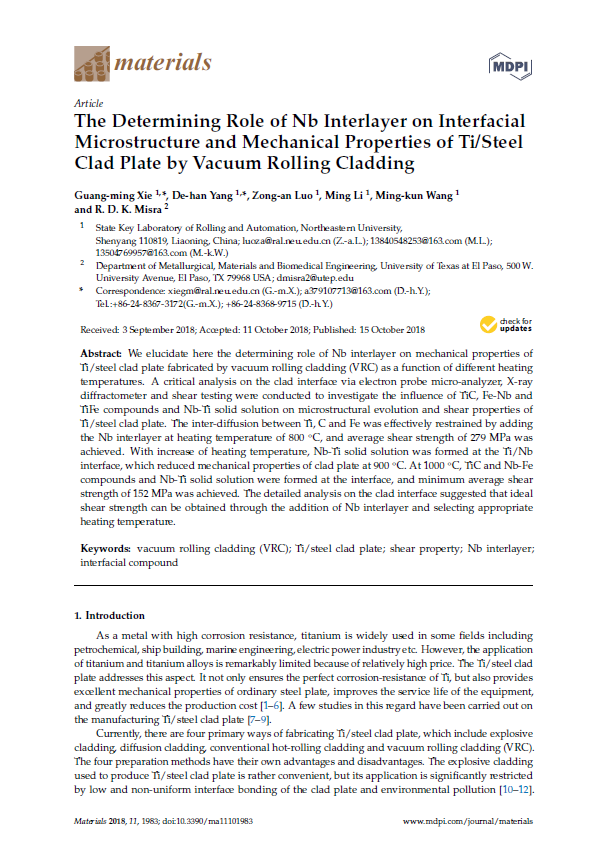We elucidate here the determining role of Nb interlayer on mechanical properties of Ti/steel clad plate fabricated by vacuum rolling cladding (VRC) as a function of different heating temperatures. A critical analysis on the clad interface via electron probe micro-analyzer, X-ray diffractometer and shear testing were conducted to investigate the influence of TiC, Fe-Nb and TiFe compounds and Nb-Ti solid solution on microstructural evolution and shear properties of Ti/steel clad plate. The inter-diffusion between Ti, C and Fe was effectively restrained by adding the Nb interlayer at heating temperature of 800 °C, and average shear strength of 279 MPa was achieved. With increase of heating temperature, Nb-Ti solid solution was formed at the Ti/Nb interface, which reduced mechanical properties of clad plate at 900 °C. At 1000 °C, TiC and Nb-Fe compounds and Nb-Ti solid solution were formed at the interface, and minimum average shear strength of 152 MPa was achieved. The detailed analysis on the clad interface suggested that ideal shear strength can be obtained through the addition of Nb interlayer and selecting appropriate heating temperature.
